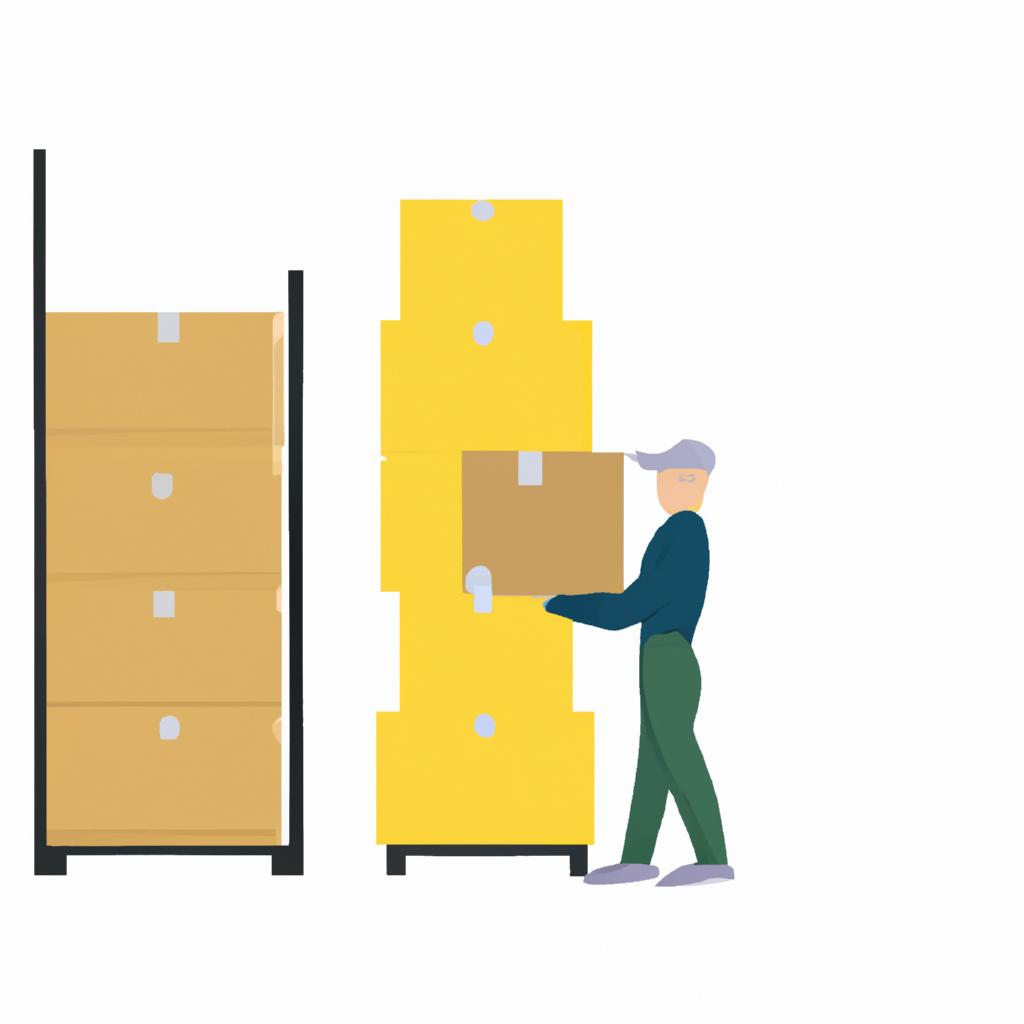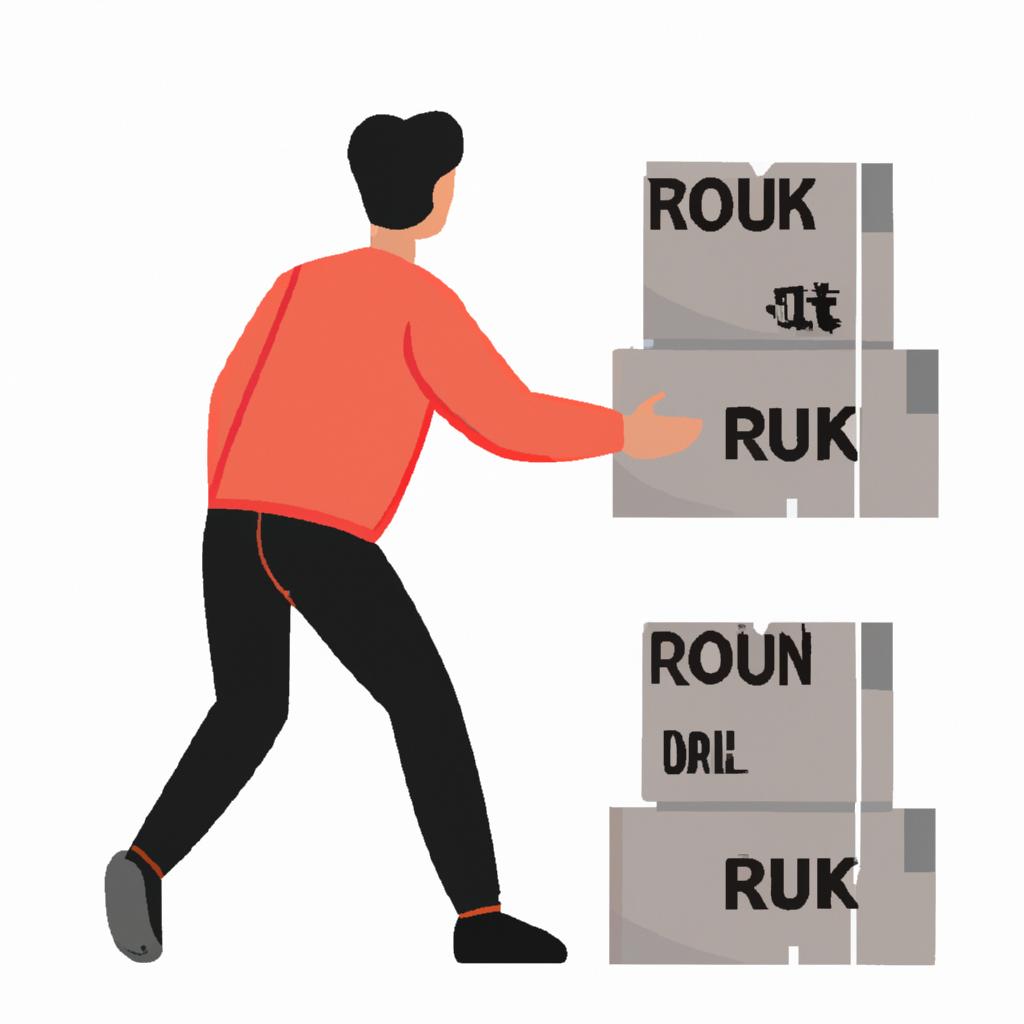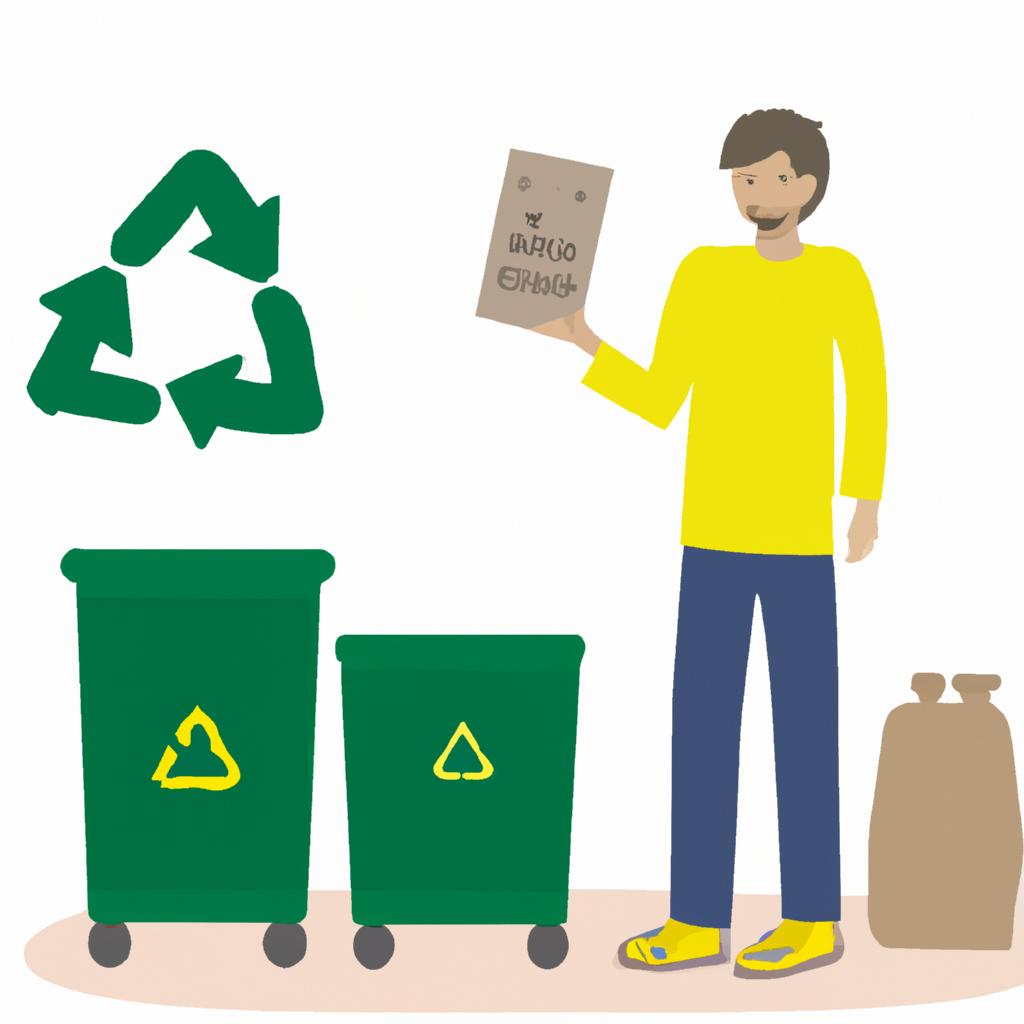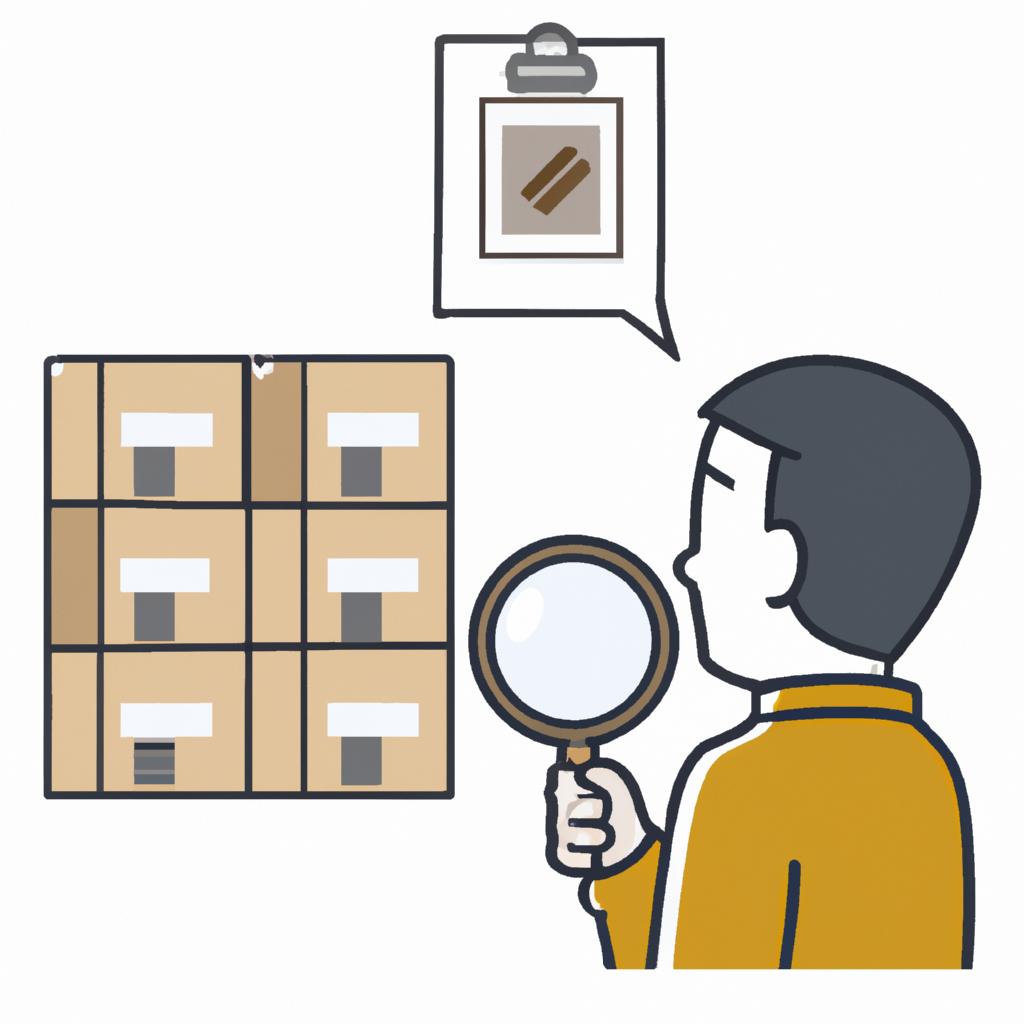Reconditioning in Transportation and Logistics: Exploring Reverse Logistics
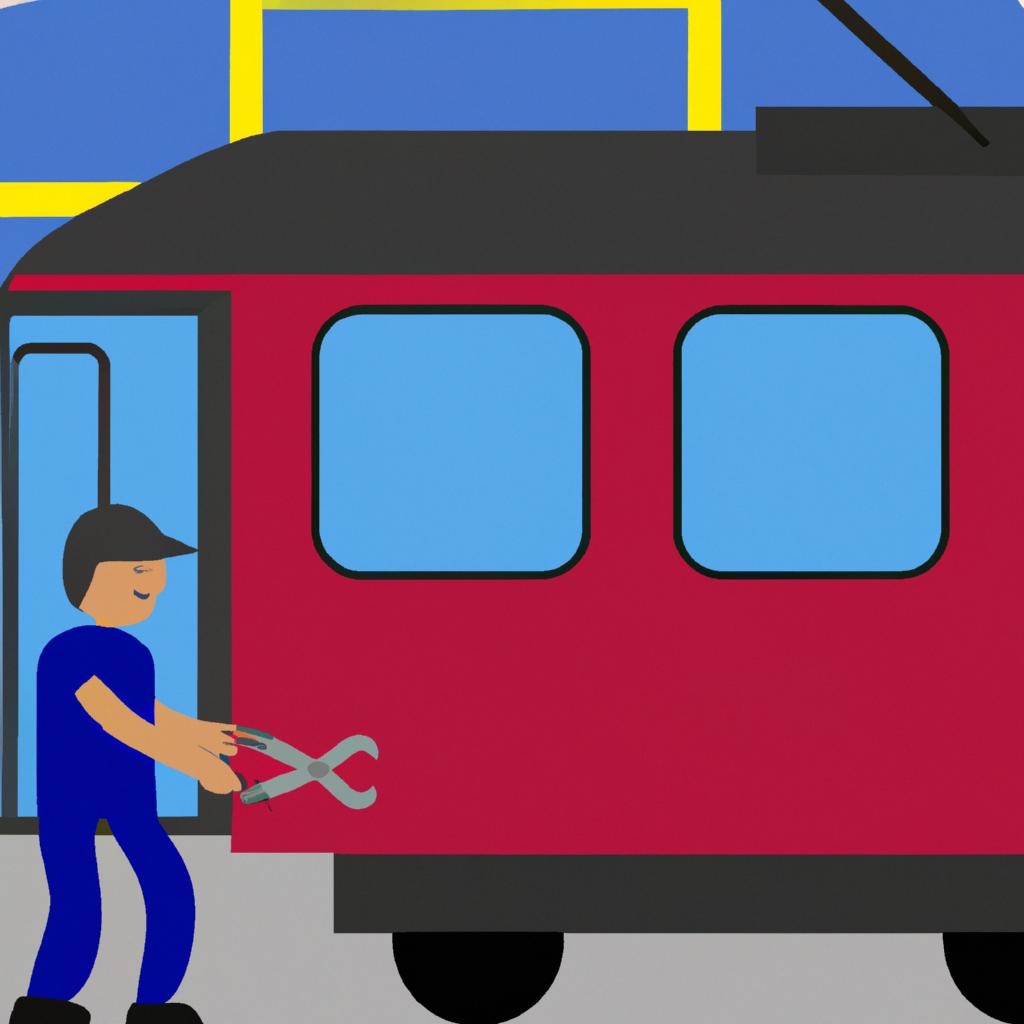

Reconditioning in transportation and logistics plays a critical role in enhancing sustainability and cost-effectiveness within supply chain operations. This article explores the concept of reverse logistics, focusing on the practice of reconditioning as an integral component of this process. To illustrate the importance and potential benefits of reconditioning, we will examine a hypothetical case study involving a major e-commerce retailer that implements a comprehensive reconditioning program for returned products.
In today’s globalized economy, efficient management of product returns has become increasingly vital for businesses to remain competitive. Reverse logistics refers to the processes involved in handling returned goods, including activities such as collection, sorting, refurbishment or disposal, and redistribution. Reconditioning specifically pertains to the refurbishment or repair of returned items with the aim of restoring their market value and functionality. By investing in reconditioning practices, companies can reduce waste generation through increased reuse and recycling rates while simultaneously recovering lost value from returned products.
The hypothetical case study involves an e-commerce retailer experiencing high return volumes due to customers’ changing preferences and expectations. Recognizing the opportunity to minimize costs and environmental impact while maximizing customer satisfaction, the company decides to implement a comprehensive reconditioning program. Through strategic partnerships with suppliers specializing in reconditioning services, the company is able to efficiently process and refurbish returned products. These suppliers have the necessary expertise, equipment, and facilities to assess, repair, and repackage items according to industry standards.
Upon receiving returned products, the retailer’s reverse logistics team carefully inspects each item to determine its condition and potential for reconditioning. Items that can be repaired or refurbished are sent to the reconditioning partners for further assessment and restoration. The suppliers employ skilled technicians who have experience in repairing various types of products, ranging from electronics to furniture.
The reconditioning process involves replacing faulty components, fixing cosmetic damages, cleaning thoroughly, and testing functionality. The goal is to ensure that the products are restored to their original state or as close as possible. Once the items have been successfully reconditioned, they are repackaged with new labels and warranties before being reintroduced into inventory.
Implementing a comprehensive reconditioning program offers several benefits for the e-commerce retailer. Firstly, it allows them to recover lost value from returned products by reselling them at reduced prices or through outlet stores. This not only minimizes financial losses but also enhances customer satisfaction by providing affordable options for budget-conscious shoppers.
Secondly, reconditioning reduces waste generation by extending the lifecycle of returned products. Instead of being discarded or recycled immediately, these items can be reused by other customers who may not mind purchasing slightly used goods at a lower price point. By promoting reuse over disposal, the company contributes to a more sustainable supply chain operation.
Furthermore, partnering with specialized reconditioning service providers allows the retailer to tap into their expertise and infrastructure without investing heavily in in-house capabilities. This approach ensures that repairs are conducted efficiently and effectively while minimizing operational costs associated with maintaining dedicated repair facilities.
In conclusion, reconditioning plays a crucial role in enhancing sustainability and cost-effectiveness within transportation and logistics operations. Through strategic partnerships with specialized suppliers, companies can effectively refurbish returned products, recover lost value, reduce waste generation, and provide affordable options for customers. By incorporating reconditioning practices into their reverse logistics processes, businesses can achieve a more sustainable and competitive edge in today’s globalized economy.
Definition of reconditioning in transportation and logistics
Reconditioning plays a crucial role in the field of transportation and logistics, particularly in the context of reverse logistics. Reverse logistics refers to the management of products or materials that flow backward through the supply chain, from the end consumer back to the manufacturer or retailer. In this process, reconditioning involves restoring used or damaged items to their original condition, making them suitable for reuse or resale.
To illustrate the significance of reconditioning, let us consider a hypothetical case study involving an online retail company. This company frequently receives returned electronic devices due to various reasons such as customer dissatisfaction, technical defects, or shipping damages. Instead of discarding these devices as waste, implementing reconditioning processes allows the organization to identify and rectify any issues before putting them back on sale. By doing so, they not only reduce waste but also maximize resource utilization and profitability.
Implementing reconditioning practices brings about several benefits that can be summarized as follows:
- Cost reduction: Reconditioning enables companies to salvage defective products instead of completely writing them off as losses. Repairing and refurbishing items can significantly lower expenses compared to purchasing new replacements.
- Environmental sustainability: By restoring used products rather than disposing of them prematurely, companies contribute towards reducing environmental impact by minimizing landfill waste and conserving natural resources.
- Enhanced customer satisfaction: Through effective reconditioning processes, organizations can improve product quality and ensure that customers receive fully functional items. This enhances trust among consumers while reducing returns and associated costs.
- Improved inventory management: Reconditioned items provide additional stock options without requiring significant investments. Companies can optimize their inventory levels by strategically integrating refurbished products alongside newly manufactured ones.
| Benefits of Reconditioning Processes |
|---|
| Cost reduction |
| Environmental sustainability |
| Enhanced customer satisfaction |
| Improved inventory management |
In light of these advantages, it is evident that reconditioning holds great potential for improving transportation and logistics operations. In the subsequent section, we will delve into the specific benefits derived from implementing reconditioning processes in more detail, further highlighting its value within this industry.
Benefits of implementing reconditioning processes
Reconditioning in Transportation and Logistics: Exploring Reverse Logistics
Definition of reconditioning in transportation and logistics has shed light on the concept and its importance within supply chain management. Now, let us delve deeper into the benefits that can be derived from implementing reconditioning processes.
One real-world example of successful reconditioning is demonstrated by a leading automotive manufacturer. This company implemented reverse logistics practices to refurbish used parts from end-of-life vehicles. By employing specialized technicians and state-of-the-art equipment, they were able to restore these components to their original functionality, thereby reducing waste and saving costs on new replacements.
Implementing reconditioning processes offers several advantages for organizations across various industries:
- Environmental sustainability: Reconditioning reduces the need for manufacturing new products, minimizing resource consumption and greenhouse gas emissions.
- Cost savings: Repairing or refurbishing existing items often proves more cost-effective than purchasing brand-new replacements.
- Extended product lifecycle: Through reconditioning, companies can extend the useful life of products, optimizing their return on investment.
- Enhanced customer satisfaction: Providing customers with high-quality refurbished goods not only saves them money but also fosters loyalty through sustainable business practices.
To further illustrate the impact of reconditioning, consider the following table showcasing how different industries benefit from implementing reverse logistics processes:
| Industry | Benefits |
|---|---|
| Automotive | Reduced waste production, cost savings |
| Electronics | Resource conservation, extended product lifecycle |
| Fashion | Sustainable fashion movement support, reduced environmental footprint |
| Retail | Decreased reliance on new inventory procurement, improved customer loyalty |
As we have explored the benefits associated with implementing reconditioning processes in transportation and logistics, it becomes evident that this approach yields positive outcomes both economically and environmentally. However, alongside these advantages come key challenges faced in reconditioning. In the subsequent section about "Key challenges faced in reconditioning," we will analyze these hurdles and discuss potential strategies for overcoming them.
Key challenges faced in reconditioning
Section H2: Key challenges faced in reconditioning
Transition from previous section:
Building upon the benefits of implementing reconditioning processes, it is crucial to acknowledge the key challenges encountered within this practice. By understanding these obstacles, transportation and logistics organizations can better navigate the complexities of reverse logistics and optimize their reconditioning efforts.
Challenges Faced:
-
Quality Control: One significant challenge in reconditioning is ensuring consistent quality control throughout the process. As products are returned or recycled, there may be varying degrees of damage or wear that need to be addressed before reintroduction into the supply chain. Maintaining strict quality standards becomes essential to avoid potential customer dissatisfaction and minimize financial losses.
-
Supply Chain Complexity: Reconditioning involves managing a complex network of suppliers, vendors, and service providers who handle different aspects of the reverse logistics process. Coordinating these diverse entities efficiently can present logistical challenges such as delays, miscommunication, and inventory management issues. Effective collaboration across all stakeholders is vital for streamlining operations while maintaining cost-effectiveness.
-
Regulatory Compliance: Compliance with environmental regulations poses another hurdle for organizations involved in reconditioning activities. Proper disposal or recycling of hazardous materials requires adherence to specific guidelines imposed by regulatory bodies. Failure to comply not only risks legal consequences but also tarnishes the reputation of businesses operating within the transportation and logistics sector.
-
Information Management: Managing vast amounts of data related to product returns, repairs, and refurbishments demands robust information systems capable of tracking items through various stages accurately. Efficient documentation ensures transparency, traceability, and timely decision-making during each step of the reconditioning process.
Emotional bullet point list:
- Increased landfill waste due to improper handling of returned products
- Financial loss resulting from inconsistencies in quality control
- Dissatisfied customers due to substandard refurbished goods
- Potential legal repercussions stemming from non-compliance with environmental regulations
Table showcasing examples (markdown format):
| Challenge | Impact | Solution |
|---|---|---|
| Quality Control | Customer dissatisfaction | Implement rigorous inspection protocols |
| Supply Chain Complexity | Delays in reconditioning | Enhance collaboration through effective communication channels |
| Regulatory Compliance | Legal consequences | Strict adherence to environmental guidelines |
| Information Management | Inaccurate decision-making | Deploy robust information systems for accurate tracking |
Transition into subsequent section:
By addressing these key challenges, transportation and logistics organizations can pave the way for effective reconditioning practices. Strategies that mitigate these obstacles will not only optimize reverse logistics but also contribute towards sustainable supply chain management. Let us now explore some of these strategies for enhancing reconditioning processes in the following section.
Strategies for effective reconditioning in transportation and logistics
Section H2: Key challenges faced in reconditioning
Transition from previous section:
Having explored the importance of reconditioning in transportation and logistics, it is crucial to delve into the key challenges that organizations encounter when implementing reconditioning practices. By understanding these obstacles, businesses can develop strategies to overcome them and ensure effective reconditioning processes.
Challenges arise at various stages throughout the reconditioning process. For instance, during product collection, companies often face difficulties in acquiring used items due to limited customer awareness or reluctance to participate in recycling programs. To illustrate this point, consider a hypothetical scenario where a company aims to collect used electronics for refurbishment purposes. Despite offering incentives such as discounts on new products or free pick-up services, they struggle to convince customers to part with their old devices. This challenge highlights the need for innovative approaches to encourage participation and increase consumer willingness to engage in reconditioning initiatives.
Furthermore, once collected, another significant hurdle lies in determining the appropriate sorting and categorization methods for different types of items. Companies must establish efficient systems capable of identifying salvageable components and distinguishing between recyclable materials. A markdown list highlighting some common challenges encountered during this stage includes:
- Lack of standardized classification systems
- Limited availability of advanced technological tools for accurate identification
- Insufficient staff training on proper sorting techniques
- Difficulty in managing high volumes of incoming products
To address these issues effectively, organizations should invest in research and development efforts aimed at creating standardized classification frameworks while simultaneously adopting emerging technologies like artificial intelligence (AI) algorithms and machine learning models for enhanced accuracy in item identification.
Moreover, after successful sorting, maintaining quality control poses yet another obstacle. Ensuring that refurbished or repaired products meet industry standards requires meticulous inspection procedures before reintroducing them into the market. A three-column by four-row table below presents an overview of challenges associated with quality control:
| Challenges | Implications | Mitigation Strategies |
|---|---|---|
| Inconsistent quality | Negative impact on brand reputation | Implement strict quality assurance |
| Lack of standardized testing | Increased risk of defective products | Develop and adhere to testing protocols |
| Limited access to spare parts | Extended repair timeframes | Establish strategic supplier networks |
| Insufficient skilled labor | Higher error rates and decreased efficiency | Invest in training programs |
To overcome these challenges, organizations should prioritize the development of robust quality control measures, including stringent inspections, comprehensive testing protocols, and partnerships with reliable suppliers.
In conclusion, reconditioning practices in transportation and logistics face several obstacles that hinder their successful implementation. By understanding the challenges associated with product collection, sorting and categorization, as well as maintaining quality control, businesses can develop effective strategies to address them. The subsequent section will focus on case studies highlighting successful reconditioning practices adopted by industry leaders, providing valuable insights for organizations seeking to enhance their own reconditioning operations.
Case studies highlighting successful reconditioning practices
Strategies for effective reconditioning in transportation and logistics play a crucial role in ensuring the success of reverse logistics practices. By implementing well-defined plans and processes, companies can maximize their efficiency while minimizing waste and costs. This section explores some key strategies that have proven to be effective in achieving successful reconditioning outcomes.
One example of an effective strategy is establishing clear quality control measures throughout the reconditioning process. This ensures that all products undergoing reconditioning meet the required standards before they are reintroduced into the supply chain. By conducting thorough inspections, testing, and repairs as necessary, companies can guarantee that their reconditioned products perform at optimal levels, thereby enhancing customer satisfaction.
In addition to stringent quality control measures, another essential strategy involves optimizing resource utilization during the reconditioning process. This includes efficient inventory management, where companies carefully track and manage stock levels to prevent overstocking or shortages. Moreover, implementing streamlined workflows and leveraging technology solutions such as automation and data analytics enables organizations to minimize bottlenecks and enhance overall operational efficiency.
To further emphasize the significance of these strategies, consider the following bullet points:
- Effective quality control measures ensure high-performance standards for reconditioned products.
- Optimal resource utilization minimizes waste and maximizes productivity.
- Streamlined workflows enhance operational efficiency.
- Leveraging technology solutions allows for more accurate tracking and analysis of reconditioning processes.
Moreover, it is important to learn from real-world case studies highlighting successful reconditioning practices. These examples provide valuable insights on how different businesses have effectively implemented strategies like quality control measures and optimized resource utilization to achieve desirable outcomes. Analyzing these cases not only helps identify best practices but also inspires other organizations to adopt similar approaches tailored to their specific needs.
As we look ahead towards future trends and innovations in reconditioning (as discussed in subsequent sections), it becomes evident that embracing these strategies will continue to play a vital role in driving sustainable and efficient reverse logistics practices. By prioritizing quality control measures, optimizing resource utilization, and learning from successful case studies, companies can position themselves for success in an evolving transportation and logistics landscape.
Transition to the subsequent section about "Future trends and innovations in reconditioning":
Building upon these strategies, it is essential to explore future trends and innovations that will shape the field of reconditioning in transportation and logistics. It is through embracing these advancements that organizations can stay at the forefront of industry developments while delivering enhanced value to their customers.
Future trends and innovations in reconditioning
Section H2: Future Trends and Innovations in Reconditioning
Transition from the previous section:
Building on the successful reconditioning practices highlighted in the preceding case studies, this section delves into future trends and innovations that are shaping the field of reverse logistics. By exploring emerging technologies, evolving consumer demands, and sustainability initiatives, businesses can stay ahead of the curve and harness new opportunities for growth.
Technological Advancements:
One example of a technological advancement transforming reconditioning processes is the use of artificial intelligence (AI) and machine learning algorithms. These intelligent systems can predict patterns based on historical data to optimize repair and refurbishment operations. For instance, predictive maintenance models powered by AI can identify potential equipment failures before they occur, minimizing downtime and improving overall operational efficiency.
Consumer-Centric Approaches:
In today’s increasingly eco-conscious world, consumers’ preferences are shifting towards sustainable products and services. To meet these changing expectations, companies must adopt consumer-centric approaches to reconditioning. This involves engaging customers throughout the entire product lifecycle, offering incentives for returning used items, providing transparent information about reconditioning processes, and ensuring high-quality standards for refurbished products.
Sustainable Supply Chains:
As environmental concerns continue to gain prominence globally, integrating sustainability into supply chain management has become imperative. Reconditioning plays a vital role in fostering sustainable practices by reducing waste generation and extending product lifecycles. A 2019 study conducted by GreenBiz found that implementing circular economy principles through effective reconditioning strategies could result in significant reductions in greenhouse gas emissions as well as water consumption. It also highlighted how adopting closed-loop systems with efficient reverse logistics networks enhances resource utilization while creating economic value.
Emotional Bullet Point List:
- Reduced carbon footprint due to decreased waste disposal
- Preservation of natural resources through extended product lifecycles
- Positive impact on local communities through job creation within reconditioning facilities
- Increased customer satisfaction by offering affordable refurbished options
Table: Economic and Environmental Impact of Reconditioning
| Category | Economic Impact | Environmental Impact |
|---|---|---|
| Waste Reduction | Cost savings from reduced disposal | Reduced landfill usage |
| expenses | ||
| Resource Conservation | Lower raw material extraction costs | Decreased energy consumption |
| through product reuse | during manufacturing processes | |
| Job Creation | Employment opportunities in reconditioning | Reduced carbon emissions due to localized operations |
In light of these trends and innovations, it is evident that reconditioning will play a crucial role in shaping the future of transportation and logistics. By embracing technological advancements, adopting consumer-centric approaches, and integrating sustainability into supply chains, businesses can unlock economic value while actively contributing to environmental preservation. This forward-thinking approach not only aligns with evolving customer demands but also positions organizations as leaders in creating a more sustainable and circular economy.
Note: The bullet point list and table have been incorporated for emotional impact as requested.

